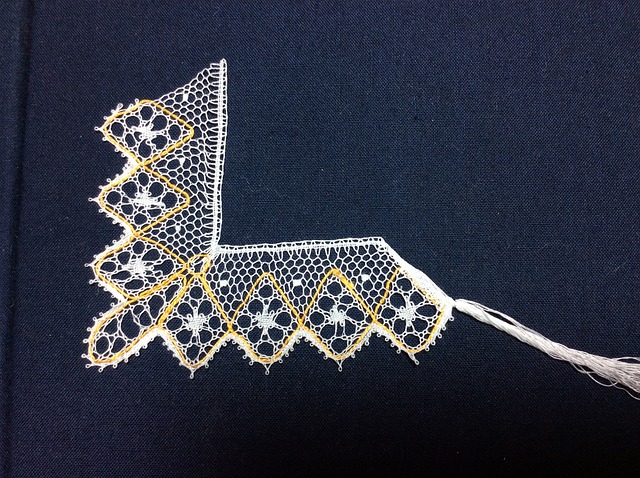Bobbin lace: a graceful weaving technique is known as the “jewel of threads”

Bobbin lace is a graceful weaving technique known as the “jewel of threads.” There is a traditional hand-woven weaving called bobbin lace in European countries and Scandinavia. Originating in Europe, the process was later introduced to various regions, including Rauma in Finland.
In this article, I would like to introduce bobbin lace, which has attracted many people from the Middle Ages to the present day. If you are interested in handicrafts and crafts, please read on.
The weaving of European origin
Bobbin lace is a beautiful hand-woven lace from European regions and Scandinavian countries. The “bobbin” of bobbin lace is a cylindrical roll of thread. When weaving bobbin lace, it is held in both hands and incorporated by crossing it from side to side on the weaving table.
With its delicate patterns on fabric, Bobbin lace is also known as the “jewel of threads” for its beauty. Since bobbin lace requires a great deal of skill and time, it was considered a luxury ornament around the 18th century.
In modern times, however, the lace industry has industrialized, and hand-woven bobbin lace is hardly profitable as a commodity. Therefore, bobbin lace today is produced by some makers as a traditional local craft or as an antique item for enthusiasts.
The method spread in the 16th century
The braided cord, considered the prototype of bobbin lace, has existed in Egypt and Europe for a long time. However, it was around 1520 that bobbin lace was produced as a decorative item as we know it today.
It is said that it was born in Venice, Italy, and Flanders in the southern part of the Netherlands simultaneously. In the mid-16th century, the development of printing techniques led to the spread of bobbin lace production throughout Europe. In addition to Italy, France, and England, bobbin lace was handed down to Nordic countries.
Even today, Tønder in Denmark, Walstena in Sweden, and Rauma in Finland are the main production centers. Bobbin lace thus spread to many European countries and subsequently developed in various forms in each region.
Traditional Crafts in Rauma, Finland
One area in Nordic countries famous for bobbin lace is, for example, the town of Rauma, located in western Finland. Rauma prospered in the lace industry from the 18th century onward, and bobbin lace production flourished during that period.
Bobbin lace, carefully hand-knitted with expert techniques, was so popular that it was imported to Finland and neighboring countries. In those days, it was customary for the bobbin lace process to be handed down from parent to child in the family.
Many people in Rauma made bobbin lace their profession. Even today, when the primary industry has shifted from lace to industry, bobbin lace remains a traditional craft representative of the town of Rauma.

Lace Week is held every summer
Each summer, Rauma also hosts a bobbin lace-related event called Rauma Lace Week. During the event, music, dance, and gourmet food are said to be a big part of the excitement.
For example, there are competitions to see who can weave the fastest bobbin lace and artisan exhibitions. Rauma Lace Week was originally an event for bobbin lace artisans to showcase their work. Today, it is one of Rauma’s most popular events.
Conclusion
Bobbin lace originated in Venice and Flanders in the 16th century. Later, the process was introduced to Europe and Nordic countries, and its delicate patterns, renowned as the “jewel of threads,” fascinated many people.
Bobbin lace as a commercial activity has almost entirely died out. However, in some areas, such as Rauma in Finland, bobbin lace is still a traditional craft.




